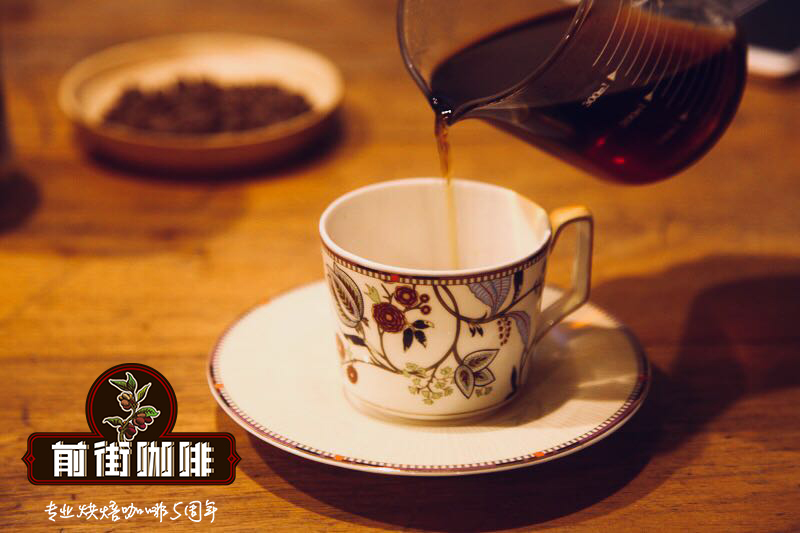Italian Coffee History Italian Coffee Culture Italian Cafe
History of Italian Coffee
In Italy around 1600s, there were many street vendors selling lemonade, orange water and chocolates. And so on, and these vendors are called "lemonade vendors".
At that time, Italy imported a large number of citrus fruits from the East, including coffee, and this was the first time that Europe had imported coffee in the name of commerce. After a reasonable supply of coffee, lemonade vendors also started the coffee business, and the flavor of coffee also fascinated Italians.
With the popularity of coffee, coffee shops have also sprung up on the streets of Italy. It is said that the first coffee shop in Italy opened in the water capital Venice, but according to the earliest record was in the western Italian port of Leghorn (English Livorno, also known as Livorno) in 1651, a British traveler had a whim to guess the reason for roasting coffee beans: "roasting is accidental, perhaps from a dissolute taste." It's like some people like the burnt part of the barbecue. "
At the end of the 17th century, there were several cafes near Piazza di San Marco in Venice, and St. Mark's Square was also famous for this. It is said that Caffe Florian, which opened in 1720, is a famous coffee shop in Europe. International celebrities and locals often gather in the cafe to chat and enjoy coffee, or enjoy symphonies in the stands. Writers and artists present include Byron, Goethe, Rousseau and others.
Italian coffee culture and amorous feelings
Italy is a passionate country. Many people from all over the world visit Italy every year. When visiting Italy, you should beware of men and coffee. There is a famous Italian saying: "Men should be like good coffee, both strong and enthusiastic!" "espresso (Italian: Caffe, English: Espresso) is the classic representative of espresso. A small cup of black coffee is so strong that it can not extricate itself.
Italians can't do without coffee every day. The first thing they do when they get up is to make coffee. Cafes on the street can be seen everywhere. According to statistics, they drink 20 cups of coffee every day. Coffee classic in addition to drinking Espresso, there is also coffee bean roasting, Italian roasting (Italian Roast) is extremely deep roasting, and the Italian coffee pot extract coffee the most mellow moment. But it all focuses on raw materials, while grinding, brewing, cup and plate utensils. There is a lot of knowledge and art in the process. Italian coffee is not only a simple drink, but also can be like a Japanese tea ceremony to form a course. It is deeply rooted in Italy, is an indispensable part of life, but also a historical and cultural heritage.
In Italy, cafes can be found everywhere, and locals call it Bar. When passing through Bar, many people can't help but go in, order a cup of coffee, then drink it in one mouthful, pay the bill, and then leave. This move is normal for Italians, it doesn't take a lot of time, but be sure to taste a cup of coffee.
Famous Italian Cafe:
Caffe Pedrocchi: located in northeastern Italy, Batu (Padua, Italian Padova, also known as Padua), opened in 1831, is said to be opened by former lemonade vendors. The cafe looks like a classical temple and is popular with local students and professors.
Ancient Greek Cafe (Antico Caffe Greco): located in the street of famous shops (Via Condotti) in Rome, Italy, near the Piazza de Spain. it opened in 1760. It is an ancient coffee shop in Rome. Its decoration preserves the noble appearance of a hundred years ago and hangs many pictures of celebrities. It used to be a favorite of scholars and scholars. Musicians such as Mendelssohn, Rossetti, Liszt and Toscanini are all regulars.
Portega Cafe (Bottega del caffe): located in Venice, Italy, opened in 1683, it is said to be the first coffee shop in Italy. Its design is compact and full of warmth. It is also the center of information, conversation, entertainment and education for people from all walks of life in Italy.
Caffe Florian: located in Piazza San Marco, Venice, Italy, opened in 1720, it is said to be opened by Floriano Francesconi. Florida Cafe is called an example of "Italian Coffee Palace". Decorated with gorgeous and elegant style and decorated with top Italian furniture, it is not only a place for social enjoyment, but also a place where people from all walks of life linger.

Important Notice :
前街咖啡 FrontStreet Coffee has moved to new addredd:
FrontStreet Coffee Address: 315,Donghua East Road,GuangZhou
Tel:020 38364473
- Prev

What is cold coffee? What are the factors that affect cold coffee?
What is cold coffee? Recently, there has been a significant increase in the demand for Lengcui coffee in the global coffee market, which has also brought some ambiguity in the concept of Lengcui coffee and areas to be developed. The so-called cold-extracted coffee refers to a way of extraction, not a cold drink. Cold-extracted coffee is clearly defined as extracting coffee with low-temperature water, but that doesn't mean you can't.
- Next
Flavor characteristics of Hawaiian Kona coffee beans grading system of Hawaiian coffee beans
The characteristics and flavor of Kona coffee beans the Kona KONA coffee tree is mainly grown at an altitude of 500 to 3000 feet above sea level in the Kona District of the Hawaii Island. it belongs to high-texture Arabica beans and grows in nutrient-rich volcanic soil and lava geology. The Kona Coffee growing area is only about 50 square miles in total and is mainly grown by small landowners. And most of Hawaii
Related
- Beginners will see the "Coffee pull flower" guide!
- What is the difference between ice blog purified milk and ordinary milk coffee?
- Why is the Philippines the largest producer of crops in Liberia?
- For coffee extraction, should the fine powder be retained?
- How does extracted espresso fill pressed powder? How much strength does it take to press the powder?
- How to make jasmine cold extract coffee? Is the jasmine + latte good?
- Will this little toy really make the coffee taste better? How does Lily Drip affect coffee extraction?
- Will the action of slapping the filter cup also affect coffee extraction?
- What's the difference between powder-to-water ratio and powder-to-liquid ratio?
- What is the Ethiopian local species? What does it have to do with Heirloom native species?

